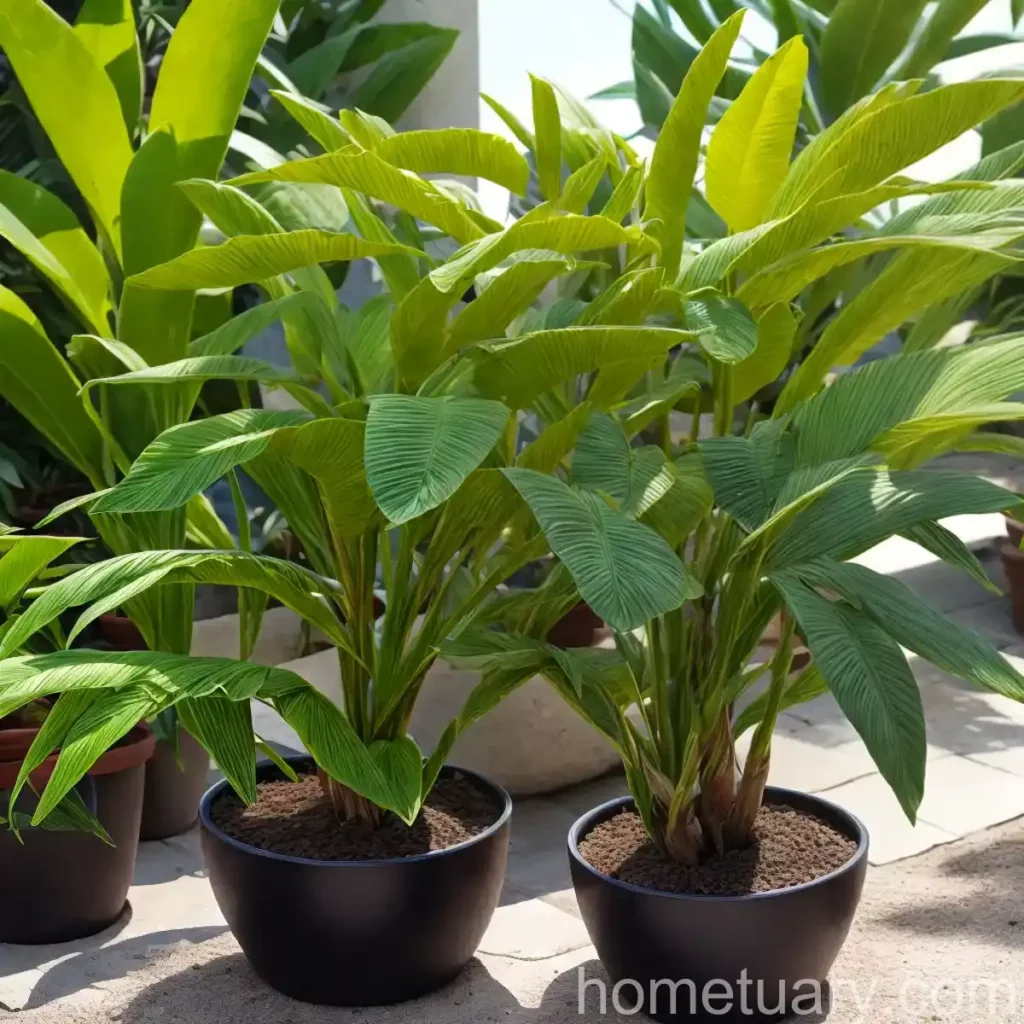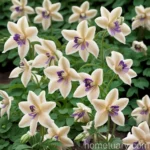The Enigmatic Beesia (Beesia deltophylla): A Foilage Marvel
Beesia deltophylla, commonly known as beesia, is a fascinating perennial plant that hails from the woods and meadows of China. This striking plant is valued for its glossy, heart-shaped leaves and delicate flowers, making it a sought-after addition to shaded gardens and landscapes. Being a plant scientist, I have had the opportunity to observe and study the unique characteristics and requirements of beesia deltophylla to provide comprehensive insights and recommendations for its cultivation and care. In this blog post, we will delve into the cultural aspects, uses, care requirements, propagation, and tips for growing this enigmatic yet captivating plant.
What is Beesia (Beesia deltophylla)?
Beesia deltophylla, belonging to the family Ranunculaceae, is a herbaceous perennial plant native to the mountainous regions of China. It is characterized by its large, glossy, evergreen foliage and delicate, star-shaped, creamy white flowers that bloom in late spring. The plant typically grows in clumps and spreads slowly through rhizomes, forming dense mats of attractive foliage.
Key Takeaways – Beesia (Beesia deltophylla)
Let’s take a look at some key takeaways about beesia deltophylla:
- Scientific Name: Beesia deltophylla
- Common Name: Beesia
- Family: Ranunculaceae
- Native Habitat: Mountainous regions of China
- Growth Habit: Herbaceous perennial, clump-forming
- Foliage: Glossy, heart-shaped, evergreen leaves
- Flowers: Creamy white, star-shaped, blooms in late spring
- Propagation: Slowly spreads through rhizomes
Now that we have a brief understanding of beesia deltophylla, let’s delve deeper into its culture, uses, and specific care requirements.
Culture
Uses
The beesia deltophylla has a variety of uses that make it a valuable addition to gardens, landscapes, and even indoor spaces. Some of its common uses include:
- Shade Gardens: Due to its preference for shade or partial shade, beesia is frequently used to add visual interest and texture to shaded garden beds and woodland landscapes.
- Groundcover: The dense, slow-spreading nature of beesia makes it an excellent groundcover option, especially in areas with limited sunlight and moist soil.
- Foliage Contrast: The glossy, heart-shaped leaves of beesia provide an attractive contrast when planted alongside other shade-loving plants with different leaf shapes and textures.
- Container Gardening: Beesia deltophylla can be grown in containers, adding a touch of elegance to shaded patios, balconies, and indoor spaces.
Now, let’s explore the specific care requirements for beesia deltophylla, including its needs for water, sunlight, soil, fertilizer, and pruning.
Water
Proper watering is crucial for the health and growth of beesia deltophylla. Here are some tips for watering this plant:
- Moist, Well-Drained Soil: Beesia prefers consistently moist, well-drained soil. Water the plant regularly, especially during dry periods, to keep the soil evenly moist but not waterlogged.
- Mulching: Applying a layer of mulch around the base of the plant helps retain soil moisture and regulates temperature, promoting optimal growing conditions for beesia.
Sunlight
Being a shade-loving plant, beesia deltophylla thrives in environments with filtered or dappled sunlight. Here are some sunlight-related tips for growing beesia:
- Shade or Partial Shade: Plant beesia in locations that receive dappled sunlight or partial shade, such as under the canopy of trees or on the north side of buildings.
- Protection from Harsh Sunlight: Avoid exposing beesia to direct, intense sunlight, as it can cause leaf scorch and negatively impact the plant’s health.
Fertilizer
Fertilizing beesia deltophylla is essential to promote healthy growth and vibrant foliage. Consider the following tips for fertilizing this plant:
- Balanced Fertilizer: Use a balanced, slow-release fertilizer formulated for shade-loving plants. Apply the fertilizer in spring as new growth emerges, following the manufacturer’s instructions for application rates.
Soil
Understanding the soil preferences of beesia deltophylla is crucial for providing optimal growing conditions. Here’s what you need to know about soil requirements for beesia:
- Rich, Moist Soil: Plant beesia in well-draining, humus-rich soil that retains moisture without becoming waterlogged. Amending the soil with organic matter, such as compost, can improve its texture and nutrient content.
- pH Level: Aim for a slightly acidic to neutral soil pH range of 6.0 to 7.0, as beesia thrives in these conditions.
Pruning
Pruning plays a role in maintaining the health, appearance, and size of beesia deltophylla. Consider the following pruning tips for this plant:
- Removal of Faded Flowers: Deadhead spent flowers to promote continuous blooming and prevent the plant from expending energy on seed production.
- Trimming and Shaping: Trim back any damaged or discolored foliage as needed to maintain the plant’s aesthetic appeal and overall vigor.
Now that we have covered the cultural aspects and basic care requirements for beesia deltophylla, let’s explore its propagation, container gardening, and address some common diseases and pests that may affect this plant.
Propagation
Propagating beesia deltophylla can be achieved through division or seed sowing. Here are some insights into successful propagation methods for this plant:
- Division: Divide mature clumps of beesia in early spring or early autumn, separating the rhizomes and ensuring that each division has an adequate portion of roots and foliage. Replant the divisions in prepared soil, keeping them well-watered until established.
- Seed Sowing: While beesia can be propagated from seeds, it’s important to note that this method may take longer to produce mature plants compared to division. Sow seeds in a well-draining potting mix, maintain consistent moisture, and provide moderate warmth for germination.
Container Gardening
Growing beesia deltophylla in containers can add a touch of elegance and lush greenery to shaded outdoor spaces. Here are some considerations for successful container gardening with beesia:
- Container Selection: Choose a container with adequate drainage holes and a size that accommodates the plant’s growth and root development.
- Potting Mix: Use a high-quality, well-draining potting mix formulated for shade-loving plants to provide the necessary support and moisture retention for beesia.
- Watering: Container-grown beesia may require more frequent watering, especially during hot, dry periods. Monitor the soil moisture and water as needed to keep the growing medium evenly moist.
Popularity
Beesia deltophylla has gained popularity among gardeners and landscaping enthusiasts due to its unique foliage, adaptability to shaded environments, and potential for use in various garden design concepts. Its growing appeal and demand stem from the following factors:
- Aesthetic Appeal: The glossy, heart-shaped leaves and delicate flowers of beesia contribute to its visual allure and make it a prized addition to gardens and landscapes.
- Shade Tolerance: As a shade-loving plant, beesia fulfills the need for attractive, low-light options for garden beds, borders, and woodland areas.
- Versatility: From groundcover to container gardening, beesia offers versatility in its applications, catering to different gardening preferences and design requirements.
With its increasing popularity, gardeners are keen to understand and implement the best practices to ensure the success of beesia deltophylla in their outdoor and indoor spaces.
Common Diseases
While beesia deltophylla is relatively resistant to diseases, certain environmental conditions or cultural practices can predispose the plant to specific issues. Understanding and addressing these common diseases are essential for maintaining the plant’s health and vigor. Here are a few common diseases that may affect beesia:
- Leaf Spot: Fungal leaf spot diseases can occur in excessively damp or humid conditions. To prevent leaf spot, avoid overhead watering and ensure proper air circulation around the plant.
- Root Rot: Prolonged waterlogging or poorly drained soil can lead to root rot in beesia. Planting in well-drained soil and regulating moisture levels can help prevent this issue.
Disease Diagnosis
Diagnosing and managing potential diseases in beesia deltophylla involves keen observation of the plant’s symptoms and prompt intervention. Consider the following steps for disease diagnosis and control:
- Symptom Identification: Look for characteristic signs of common diseases, such as leaf spots, yellowing foliage, or wilting, and carefully inspect the plant for any visible lesions or discoloration.
- Cultural Practices: Implement proper cultural practices, including watering, soil improvement, and adequate spacing, to create unfavorable conditions for disease development.
- Fungicidal Treatments: If necessary, use targeted fungicidal treatments recommended for the specific disease affecting beesia, following the instructions on the product label.
Common Pests
While beesia deltophylla is generally resistant to pest infestations, certain pests may occasionally pose a threat to its health. Some common pests that may affect beesia include:
- Slugs and Snails: These moisture-loving pests can cause damage to the foliage of beesia, especially in damp and shaded areas.
- Spider Mites: In dry and dusty conditions, spider mites may infest the plant, causing stippling and discoloration of the leaves.
Botanist’s Tips
As a plant scientist with expertise in the cultivation of beesia deltophylla, I would like to offer the following tips for successful growth and care of this plant:
- Soil Moisture: Maintain consistent soil moisture, balancing the need for damp conditions with the avoidance of waterlogged soil.
- Mulching: Apply a layer of organic mulch around the base of beesia to regulate soil temperature and moisture, as well as suppress weed growth.
- Pruning Timing: Perform pruning and deadheading tasks after the flowering period to maintain the plant’s appearance and encourage healthy growth.
Fun Facts
To enrich our understanding and appreciation of beesia deltophylla, here are some fun and interesting facts about this remarkable plant:
- Symbolism: Beesia is associated with attributes such as resilience, adaptability, and understated elegance, making it a symbolic addition to gardens and landscapes.
- Wildlife Benefits: The nectar-rich flowers of beesia attract pollinators such as bees and butterflies, contributing to the ecological diversity of shaded environments.
- Medicinal Uses: In traditional Chinese medicine, certain parts of the beesia plant are utilized for their purported medicinal properties, reflecting its cultural and historical significance.
Links to External Resources
To further explore the world of beesia deltophylla and gain additional insights into its cultivation, care, and applications, I recommend referring to the following reputable external resources:
- Royal Horticultural Society (RHS) – Beesia deltophylla Plant Profile
- American Society for the Prevention of Cruelty to Animals (ASPCA) – Toxic and Non-Toxic Plants: Beesia deltophylla
- University of Florida IFAS Extension – Integrated Pest Management for Beesia deltophylla
- Missouri Botanical Garden – Beesia deltophylla Overview
Conclusion
In concluding this comprehensive exploration of the captivating beesia deltophylla, it is evident that this plant has much to offer in terms of beauty, adaptability, and ecological significance. From its glossy foliage and delicate flowers to its potential for enhancing shaded gardens and landscapes, beesia remains an intriguing subject for enthusiasts and horticulturists alike. By adhering to the recommended cultural practices, understanding its specific care requirements, and being mindful of potential diseases and pests, gardeners can ensure the successful growth and flourishing of beesia deltophylla in their outdoor and indoor spaces. As we continue to appreciate and study the diverse world of plants, beesia stands as a compelling example of nature’s artistry and resilience, inspiring us to cultivate and cherish its presence in our botanical tapestry.
For further information, feel free to visit the American Horticultural Society or Botanical Society of America for latest updates and research on beesia deltophylla.















